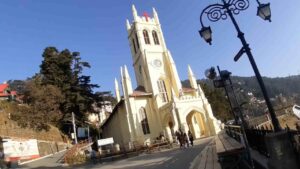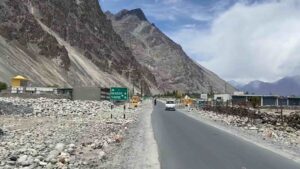Pick top things to do in Lecce, must-see landmarks and secret spots, ensuring you experience the best the city has to offer.
Lecce, often referred to as the “Florence of the South,” is a captivating city in Puglia, Italy, renowned for its stunning Baroque architecture, rich history, and vibrant culture. Wandering through its narrow streets, marveling at its ancient ruins, or discovering hidden gems, there’s no shortage of things to do in Lecce. This charming city offers a perfect blend of must-see attractions and local secrets, making it an ideal destination for travelers seeking both iconic landmarks and off-the-beaten-path treasures. From awe-inspiring churches and historic squares to tucked-away spots beloved by locals, Lecce is a place where history comes alive at every turn.
How to Get to Lecce: Travel Tips and Transportation Options
Lecce, located in the southern part of Italy’s Puglia region, is accessible via several modes of transportation, making it easy for travelers to reach this captivating city. Flying in from abroad or traveling by train, here are your best options for reaching Lecce.
By Air:
Nearest major airport to Lecce is Brindisi Airport (Aeroporto del Salento), about 40 kilometers away from the city. Brindisi is served by both international and domestic flights, especially during the summer months. From the airport, you can reach Lecce by a direct train or a bus that operates frequently, with the journey taking approximately 40 minutes. Alternatively, taxis or car rentals are also available.
By Train:
Lecce is well-connected to other cities in Puglia and beyond by train. The Lecce Railway Station is a central hub with regular services from major Italian cities such as Bari, Brindisi, and Naples. For those traveling from Rome, Florence, or Milan, it’s possible to reach Lecce by taking a high-speed train to Bari or Brindisi and then transferring to a local train to Lecce. The train journey from Bari to Lecce takes about one hour and offers scenic views of the Italian countryside.
By Car:
A more flexible approach, driving is an excellent option. Lecce is easily accessible by car from various parts of Italy, including Rome and Naples, via the A14 and A16 highways. The drive offers stunning views of the Adriatic coast and the rural landscapes of Puglia. Parking in Lecce can be challenging in the city center, but there are various parking lots and garage options just outside the main areas of the city.
Riga Tourist Attractions: What to See & Do in Latvia’s Capital
Best Time to Visit Lecce: Seasonal Guide for Perfect Timing
Timing of your visit to Lecce plays a essential role in how you experience the city. Each season offers something unique, from pleasant weather to cultural events. Here’s a breakdown of the best times to visit.
Spring (April to June):
Spring is undoubtedly one of the best times to visit Lecce, as the weather is mild and pleasant. The city is adorned with blooming flowers, and outdoor attractions like Piazza del Duomo and the Roman Amphitheatre come alive with vibrant greenery. Spring in Lecce is the time when many cultural events begin, including art exhibitions and music festivals, making it a great season for a mix of relaxation and culture.
Summer (July to September):
Summer in Lecce is warm, with temperatures reaching the high 30s°C (90s°F), which means it’s ideal for enjoying the Mediterranean coast. It can also be crowded with tourists, especially in August. If you’re coming during summer, make sure to plan your visits to indoor attractions like museums or churches in the morning or late afternoon when it’s cooler. The evenings, are perfect for enjoying the lively nightlife of Lecce, especially along the charming streets of the historic center.
Autumn (October to November):
Autumn offers pleasant weather, with cooler temperatures and fewer tourists compared to summer. This is the ideal time to enjoy Lecce’s outdoor attractions in comfort and to visit the city’s historic sites without the summer crowds. Autumn brings the grape harvest season in Puglia, so it’s a fantastic time to indulge in local food and wine, including the region’s renowned Primitivo wines.
Winter (December to March):
While winter in Lecce can be chilly, it offers a completely different atmosphere. The city is quieter, giving visitors a chance to the historic sites at a leisurely pace without the hustle and bustle of tourists. It’s also the best time to experience Lecce’s winter festivals and Christmas markets, where you can enjoy local treats and cultural events. Winter is ideal for those who prefer peace and solitude, and if you’re lucky, you may even catch some snowfall, which adds a magical touch to the city’s Baroque architecture.
Things to Do in Lecce: A Complete Guide to Must-See Attractions
Lecce, often called the “Florence of the South,” boasts a remarkable blend of Roman, Norman, and Baroque architecture. Its historical and artistic heritage makes it a must-visit destination for travelers. From exploring ancient ruins to strolling through charming piazzas and marveling at Baroque buildings, Lecce offers something for every type of traveler. Here are the top attractions in Lecce you shouldn’t miss.
1. Piazza del Duomo
The Piazza del Duomo is one of the most breathtaking places in Lecce, where visitors can truly appreciate the grandeur of Baroque architecture. The square is enclosed by some of the city’s most impressive structures, including the Cathedral of Lecce (Duomo di Lecce), the Bishop’s Palace, and the Seminary.

Cathedral of Lecce, built in 1144 and reconstructed in the late 1600s, blends Baroque style with earlier Romanesque elements. Its exterior is adorned with dramatic sculptures, and the interior features richly decorated altars, a wooden choir, and beautiful frescoes. The altar’s sculptural reliefs tell stories from the Bible, and the church’s high vaulted ceiling adds a sense of reverence and awe.
A visit to the bell tower offers a panoramic view of the city. From here, you can see the Piazza del Duomo, with its surrounding architecture, as well as the rooftops of Lecce’s historical center. The piazza itself is a peaceful place to relax and soak up the surroundings, offering a variety of cafés where you can enjoy a coffee while admiring the view.
2. Roman Amphitheatre
Roman Amphitheatre stands as a monumental reminder of Lecce’s importance in ancient times. Located in Piazza Sant’Oronzo, the amphitheater dates back to the 2nd century AD and was built during the reign of Emperor Hadrian. It could originally hold about 25,000 spectators, and it hosted a variety of events, including gladiatorial games, animal hunts, and theatrical performances.
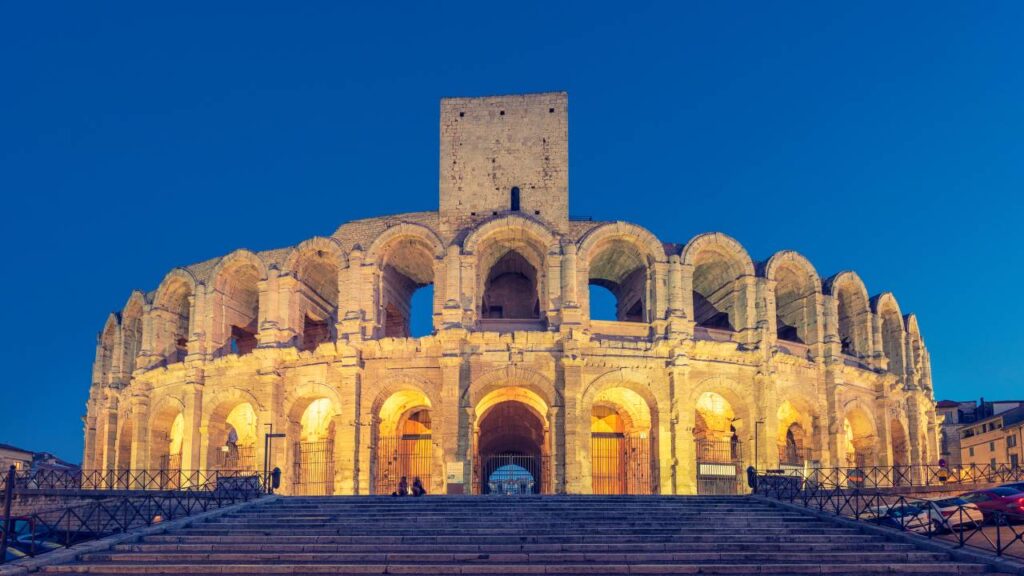
Today, much of the amphitheater is buried beneath the city, but parts of the seating and the arena have been excavated. As you visit the site, you’ll notice several layers of construction, reflecting Lecce’s historical evolution, including ruins from the Roman period and the medieval era.
The amphitheater is an excellent place to reflect on how public entertainment and social life functioned in ancient times. The museum nearby offers a detailed explanation of the amphitheater’s history, including artifacts and displays that further illustrate life in Lecce during the Roman Empire.
3. Basilica di Santa Croce
Basilica di Santa Croce is one of the finest examples of Baroque architecture in Lecce. Its elaborate façade is the work of Giacomo Colombo and features intricate carvings of biblical figures, angels, and saints, with symbolic depictions that represent Christian virtues. These carvings create a magnificent stone lacework effect, and the overall design embodies the exuberance of Baroque aesthetics.

Inside the basilica, you’ll be captivated by its soaring vaulted ceilings and ornate altars. The main altar is beautifully adorned, and the altarpiece of The Crucifixion, painted by Francesco Solimena, is one of the church’s key artistic highlights. The basilica also houses a relic of the Holy Cross, which adds spiritual significance to the site.
Adjacent to the basilica is Piazza Santa Croce, a peaceful area with cafés and shops where you can relax and take in the atmosphere. The square’s tranquil nature offers a stark contrast to the elaborate design of the basilica and is the perfect spot for reflection after exploring the church.
4. Castello di Carlo V
The Castello di Carlo V is a powerful symbol of Lecce’s medieval past. Built in the 16th century by Emperor Charles V to defend the city from invaders, the castle has undergone several transformations throughout the centuries. Originally a military fortress, it now serves as a cultural center and museum complex.

As you approach the castle, you’ll see the thick walls, massive defensive towers, and the central courtyard, all offering a glimpse into the fortress’s military origins. Inside, the castle houses several exhibits, including works of art, sculptures, and historical artifacts. It also hosts temporary art exhibitions and cultural events throughout the year.
The castle’s elevated position provides stunning views of the surrounding city, including the old town. The spacious courtyards are ideal for a leisurely walk, and there are often performances or events held in the open-air spaces. Make sure to visit the castle’s gardens, which offer a peaceful retreat from the hustle and bustle of the city.
5. Porta Napoli
Porta Napoli is a monumental city gate that marks the southern entrance to Lecce’s historic center. Constructed in the 16th century to celebrate the visit of Charles V, this grand structure embodies the Baroque style that defines much of the city’s architecture.
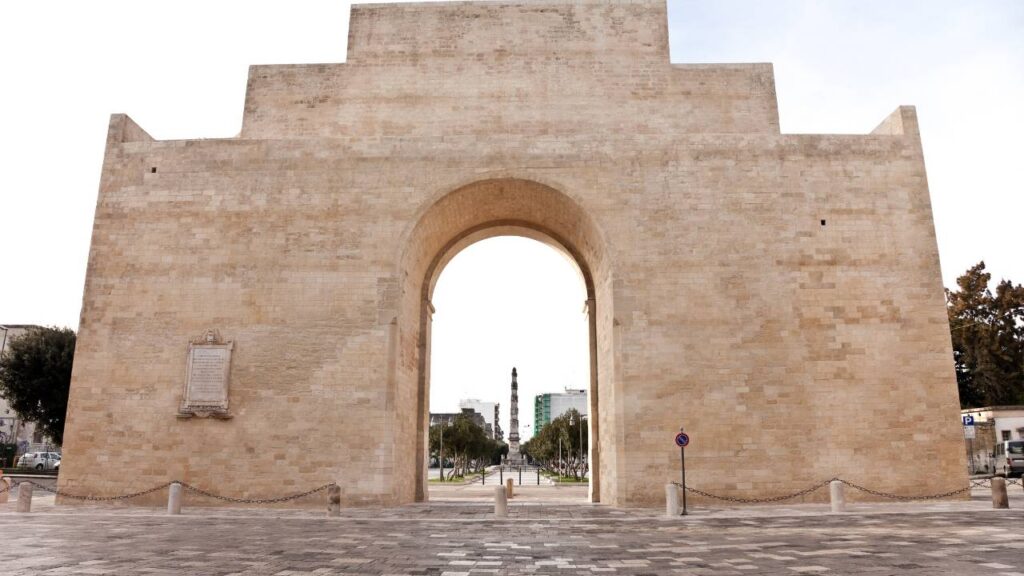
The gate is adorned with elaborate sculptural reliefs and symbols of the Habsburg dynasty, including coats of arms and angels. The intricate carvings reflect the wealth and importance of Lecce during the Renaissance and Baroque periods. The archway, with its towering columns, stands as a tribute to the city’s artistic and architectural heritage.
As you approach the gate, you’ll notice how the surrounding streets converge on this grand entrance, making it an ideal spot for photographs. The Piazza di Porta Napoli offers a scenic spot to take in the grandeur of the gate and the surrounding buildings.
6. Piazza Sant’Oronzo
Piazza Sant’Oronzo is not just a historical square; it’s the vibrant heart of Lecce. The square is named after Saint Oronzo, the patron saint of Lecce, and features a column topped with a statue of the saint, which was erected in 1682.
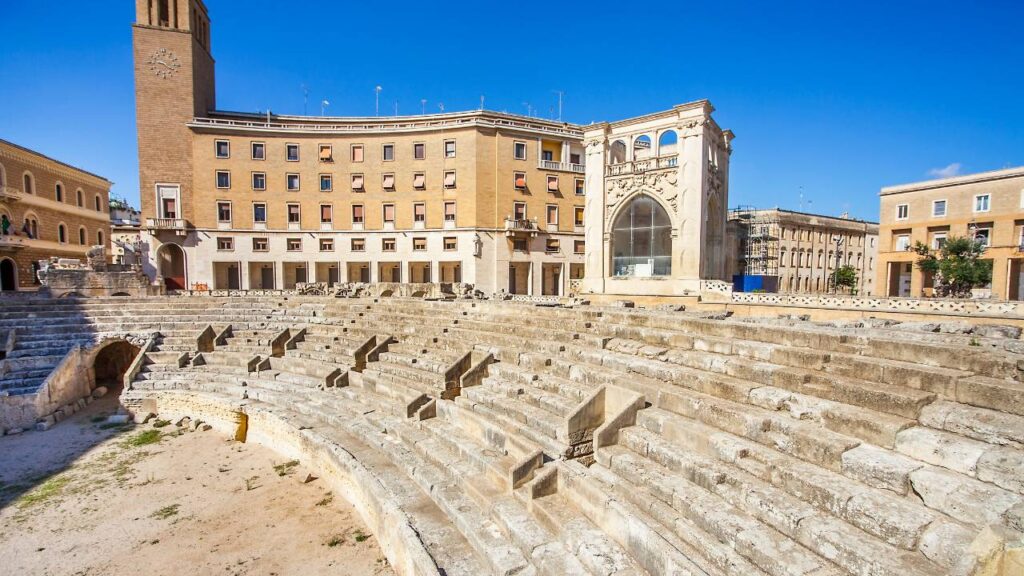
At the center of the square, you can admire the Sedile, the former town hall, with its grand architecture. Originally, this was where the city’s governing council met, but today it’s a museum dedicated to Lecce’s civic history. The square also houses the Church of San Marco, a beautiful structure that has a modest façade but contains intricate details inside.
The square is surrounded by cafés, restaurants, and shops, making it a great place to grab a bite to eat or enjoy a drink while people-watching. During festivals and special events, Piazza Sant’Oronzo becomes a lively stage for concerts and performances, offering visitors a chance to experience local culture up close.
7. Museo Faggiano
The Museo Faggiano is one of Lecce’s hidden gems. Located in a private residence, the museum offers a unique look at the layers of history beneath the city. The building itself dates back to the 16th century, and its transformation into a museum started after renovations uncovered hidden ruins.
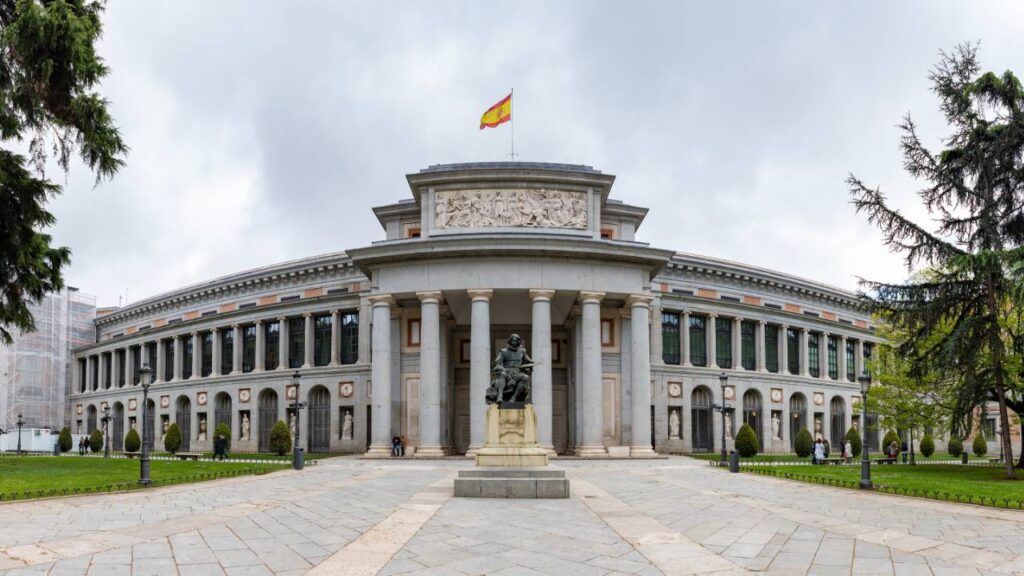
The museum’s exhibits showcase ancient artifacts discovered on-site, including Roman tombstones, medieval frescoes, and coins from various periods of Lecce’s history. The most remarkable discovery was an underground cistern that served as a water storage system. This addition to the museum’s collection allows visitors to walk through tunnels and see how people in past centuries managed water and waste.
What makes the Museo Faggiano so special is its hands-on approach to archaeology. Visitors can visit the building at their own pace, and the museum’s team offers in-depth information about the ongoing excavations.
8. Lecce’s Historic Center
Lecce’s historic center is a maze of narrow, cobblestone streets lined with beautiful Baroque palaces, churches, and squares. As you wander through the Centro Storico, you’ll discover charming alleyways that open up to picturesque piazzas, each offering a unique piece of Lecce’s past.
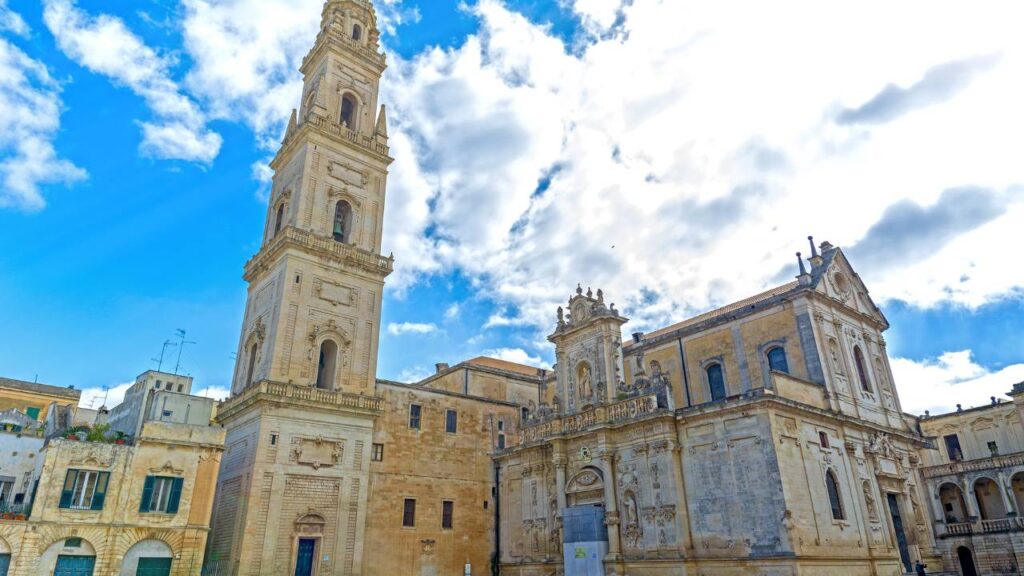
Don’t miss Vicolo del Gigante, one of the most picturesque and photogenic spots in the city. This narrow alley, with its ancient stone walls, leads you to stunning vistas of Lecce’s architecture. For shopping, head to Piazza Mazzini, the city’s main shopping district, where you’ll find high-end boutiques and local artisans selling handmade products.
Throughout the center, you’ll encounter traditional Lecce limestone, known as “pietra leccese,” used in the construction of buildings, creating a warm and golden hue in the sunlight. Lecce’s center is also dotted with local cafés, where you can enjoy traditional pastries such as pasticciotto, a creamy, custard-filled pastry that is a local delicacy.
Local Secrets of Lecce: Hidden Places and Off-the-Beaten-Path Treasures
While the main attractions captivate visitors, there are lesser-known treasures tucked away throughout the city that provide a unique experience. From quiet piazzas to historical secrets and cozy local spots, these off-the-beaten-path locations invite you to visit Lecce beyond the usual tourist trail. Here’s a guide to some of Lecce’s best-kept secrets, where you can discover the true heart of the city.
1. Piazza Sant’Oronzo
While many tourists rush toward Piazza del Duomo, Piazza Sant’Oronzo offers a quieter, equally captivating experience in the heart of Lecce’s historic center. This charming square features the Column of Sant’Oronzo, a symbol of the city where a statue of the patron saint stands proudly. Erected in the 17th century, the column is a local point of pride.
The square is home to the impressive ruins of the Roman Theatre, one of the largest surviving structures from ancient Lecce, dating back to the 2nd century. With fewer tourists and a more peaceful ambiance, Piazza Sant’Oronzo is the perfect spot for a relaxing stroll or to enjoy the historic surroundings in solitude.
2. Vicolo del Sole
To experience Lecce like a local, head to Vicolo del Sole, a narrow, picturesque alley tucked away from the main crowds. This charming street is a prime example of Lecce’s traditional architecture, with its stone-paved path and ancient limestone buildings made from the region’s famous pietra leccese.
The alley feels intimate and quiet, offering a peaceful escape and a chance to capture photos of Lecce’s hidden beauty, especially during the golden hours of early morning or late afternoon. As you wander, you might stumble upon cozy cafés, art galleries, or boutiques, each adding to the alley’s authentic charm.
3. Museo Faggiano
For a deeper understanding of Lecce’s fascinating archaeological history, visit Museo Faggiano. Located in a historic family home, this unique museum showcases the discoveries made during renovations, where the owners uncovered Roman, medieval, and Byzantine structures beneath their house. What started as a simple restoration project turned into an extraordinary archaeological find.
The museum offers guided tours through the ancient cisterns, medieval frescoes, and Roman mosaics. With its detailed exhibits, Museo Faggiano provides a one-of-a-kind glimpse into Lecce’s layered history, making it a must-visit for history enthusiasts.
4. Caffè Alvino
To immerse yourself in Lecce’s café culture, visit Caffè Alvino, a beloved local spot that has served both locals and visitors for over a century. Unlike larger tourist-focused cafés, Caffè Alvino offers a warm, inviting atmosphere perfect for enjoying a freshly brewed coffee or an espresso.
Here, you can savor pasticciotto, Lecce’s signature pastry filled with creamy custard, while people-watching on Piazza Sant’Oronzo. The café’s historic charm and laid-back vibe give you an authentic taste of daily life in Lecce, making it a perfect place to relax and unwind.
5. Giardini Pubblici (Public Gardens)
Located away near the city center, Giardini Pubblici offers a peaceful escape from Lecce’s busy streets. Once part of Lecce’s royal gardens, this public park features lush lawns, tranquil ponds, and shaded pathways, providing a serene environment for relaxation. It’s a perfect spot for a leisurely stroll, reading a book, or enjoying a peaceful picnic, especially in spring and summer when the flowers bloom and the mature trees provide much-needed shade. Whether you seek quiet contemplation or simply want to take a break from sightseeing, the Giardini Pubblici offers a tranquil retreat within the city.
6. Palazzo dei Celestini
Palazzo dei Celestini, often overlooked by tourists, is one of Lecce’s most impressive historical buildings. Built in the 17th century, this former monastery is a beautiful example of Baroque architecture. Its façade, adorned with intricate sculptural details, is just a preview of the ornate interior, particularly the Chapel of St. Thomas Aquinas, which houses some of Lecce’s finest frescoes.
Although the palace now serves as the seat of provincial administration, it occasionally opens its doors to the public for special events. Stop by to admire the building’s architectural grandeur or, if you’re lucky, visit its elegant courtyards and the rare books in the Library of the Celestini.
7. Chiesa di San Matteo
Often flying under the radar, Chiesa di San Matteo is a stunning hidden gem in Lecce. Built in the late 17th century, this Baroque church, while smaller than Basilica di Santa Croce, is equally impressive. Its façade features detailed carvings of saints and biblical scenes, while the interior boasts beautiful stucco work and frescoes.
The altar, with its dramatic marble sculptures, stands out as a striking centerpiece. Located just off Piazza San Matteo, this church offers a peaceful, reflective experience away from the larger crowds, allowing you to appreciate the finer aspects of Lecce’s Baroque craftsmanship in an intimate setting.
Reggio Calabria Travel Guide: Best Time, Food & Must-See Places
FAQs
1. What are the top attractions to visit in Lecce?
Lecce boasts stunning Baroque architecture, with key attractions like the Basilica di Santa Croce, the Roman Amphitheatre, and Piazza del Duomo. You can also enjoy the charming streets and hidden gems such as Piazza Sant’Oronzo and Lecce Cathedral.
2. Is Lecce a good destination for history enthusiasts?
Yes, Lecce is perfect for history lovers. You can visit Roman and Baroque architecture by visiting sites like the Roman Theatre, Museo Faggiano, and the city’s historic center, which is filled with ancient buildings and monuments.
3. Can I explore Lecce on foot?
Definitely! Lecce is a walkable city, and most of the main attractions lie close to each other in the historic center. Walking through its charming streets, discovering hidden alleys, and admiring the Baroque architecture offers an enjoyable experience.
4. Where can I experience Lecce’s famous cuisine?
Lecce serves delicious local dishes such as pasticciotto (a custard-filled pastry) and rustico leccese (a savory pastry with cheese and tomato). Enjoy these delicacies at local cafés like Caffè Alvino or traditional trattorias scattered around the city.
5. What are the best day trips from Lecce?
Lecce is well-positioned for fantastic day trips to Puglia’s coastal towns like Otranto and Gallipoli, as well as the famous Trulli houses in Alberobello. You can also visit historical sites like Castel del Monte and Castelpaolo.
6. Are there any hidden gems in Lecce?
Lecce is full of hidden treasures. For a quieter spot, visit Vicolo del Sole, a narrow, picturesque alley. Intriguing Museo Faggiano, where ancient Roman and medieval remains were uncovered, or unwind in the serene Giardini Pubblici (Public Gardens).
7. What is Lecce known for in terms of shopping?
Lecce offers a variety of artisan shops selling unique local products. You’ll find goods made from pietra leccese (local stone), handmade leather items, jewelry, and locally produced olive oil, wines, and ceramics, making it a great place for souvenir shopping.
8. What can I do in Lecce at night?
At night, Lecce becomes lively with cafés, bars, and restaurants. You can enjoy a leisurely dinner in the historic center, sip an aperitivo in one of the piazzas, or take a stroll through Piazza Sant’Oronzo and Piazza del Duomo, both beautifully lit up in the evening.
9. Is Lecce suitable for families?
Yes, Lecce is family-friendly. Children will enjoy the open spaces of Giardini Pubblici, the Roman Amphitheatre, and the ancient ruins. Many museums, such as Museo Faggiano, offer interactive exhibits that will captivate young visitors.
10. What is the best time to visit Lecce?
The best time to visit Lecce is in the spring (April to June) or fall (September to October). These seasons offer pleasant weather and fewer crowds than the summer months, allowing you to enjoy the city’s gardens and outdoor dining without the heat.





